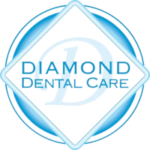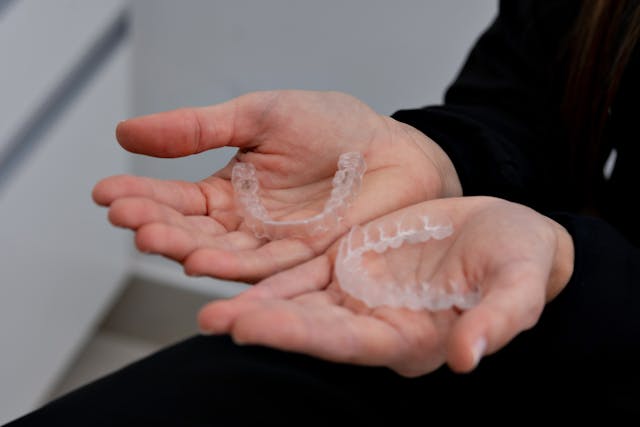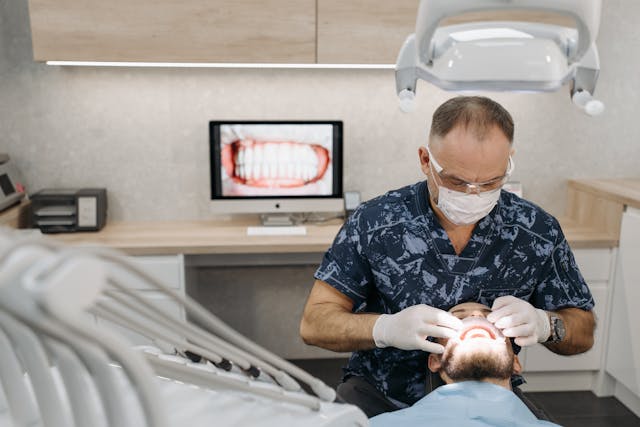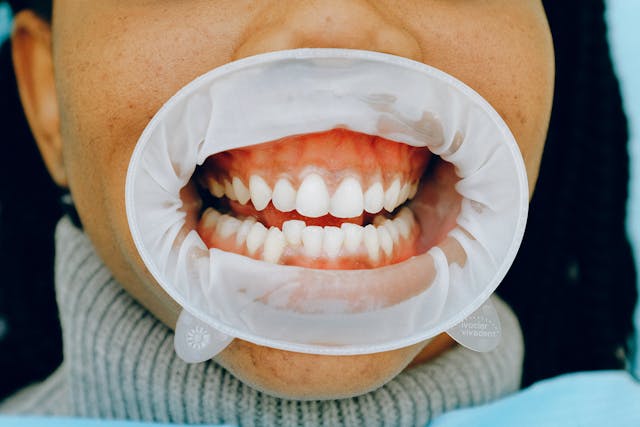Keeping your bright and healthy smile doesn’t have to be a challenge. With some simple daily habits and a bit of knowledge, you can maintain excellent oral health between your visits to the dentist. Here’s a comprehensive guide on how to keep your teeth and gums in top shape.
At Diamond Dental Care, we can examine you in our cosmetic dentistry office and discuss what you don’t like about your smile. If you have gaps between your teeth or they are crooked, stained, or misshapen, we can fix them in our dental office. There are several ways we can address most aesthetic issues, so we will conduct an examination, take x-rays, discuss the timeframe we are working with, and then present you and your parents with a variety of options to choose from.
Since some have set time constraints, it is best to schedule your appointment with our office as soon as possible. You can do so by calling (909) 860-7579. You can also follow us on Facebook or provide your valuable feedback at Yelp. Thanks.
Daily Brushing Habits For Healthy Smile
Choosing the Right Toothbrush
The first step to a healthy smile is using the right toothbrush. Opt for a soft-bristled brush that can reach all areas of your mouth. Electric toothbrushes are also a great choice as they can be more effective in removing plaque.
Proper Brushing Technique
Technique matters when brushing. Hold your toothbrush at a 45-degree angle to your gums and use gentle, circular motions. Make sure to brush all surfaces of your teeth—front, back, and chewing surfaces.
How Often to Brush
Brush at least twice a day, ideally in the morning and before bed. If possible, brushing after meals can help prevent food particles from sitting on your teeth and causing decay.
The Importance of Flossing For Healthy Smile
Why Flossing is Essential
Brushing alone doesn’t remove all the plaque and food particles between your teeth. Flossing is crucial for cleaning these tight spaces and preventing gum disease and cavities.
Correct Flossing Technique
Use about 18 inches of floss, winding most of it around your middle fingers, and leaving an inch or two to work with. Gently slide the floss between your teeth, curving it around each tooth and moving it up and down.
Types of Floss
There are various types of floss available, including waxed, unwaxed, dental tape, and floss picks. Choose the one that feels most comfortable for you to use regularly.
Using Mouthwash Effectively For Healthy Smile
Benefits of Mouthwash
Mouthwash can reach areas that brushing and flossing might miss. It helps reduce plaque, fight gingivitis, and freshen breath.
Choosing the Right Mouthwash
Look for a mouthwash that meets your specific needs. For example, an antibacterial mouthwash can help with gum health, while fluoride mouthwash strengthens teeth.
When and How to Use Mouthwash
Use mouthwash after brushing and flossing. Pour the recommended amount into a cup, swish it around your mouth for about 30 seconds, and then spit it out.
Diet and Oral Health For Healthy Smile
Foods That Promote Healthy Teeth
Eating a balanced diet is essential for oral health. Dairy products, leafy greens, and crunchy fruits and vegetables like apples and carrots can help strengthen teeth and gums.
Foods to Avoid
Limit sugary and acidic foods and drinks, as they can erode enamel and lead to cavities. Sticky candies are particularly harmful as they tend to linger on your teeth.
The Role of Hydration
Drinking plenty of water helps wash away food particles and keeps your mouth moist, which is important for preventing decay and bad breath.
Regular Dental Check-ups For Healthy Smile
Why Regular Visits Matter
Regular dental check-ups are essential for detecting issues early, cleaning hard-to-reach areas, and maintaining overall oral health.
What to Expect During a Dental Check-up
During a check-up, your dentist will examine your teeth and gums, clean your teeth, and discuss any concerns you may have. X-rays might be taken to check for issues not visible to the naked eye.
How Often to Visit Your Dentist
Aim to visit your dentist every six months. However, your dentist may recommend more frequent visits if you have specific oral health issues.
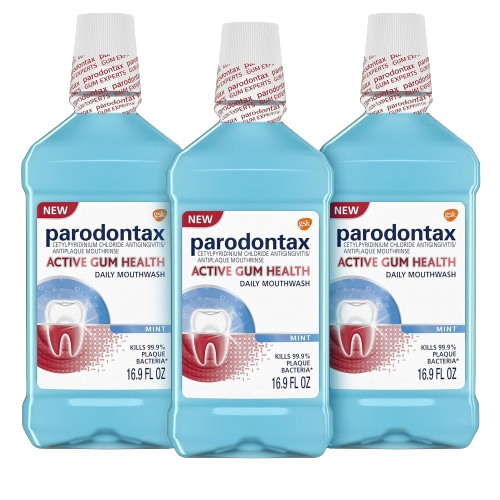
The Role of Fluoride For Healthy Smile
Benefits of Fluoride
Fluoride is a mineral that helps prevent tooth decay by making teeth more resistant to acid attacks from plaque bacteria and sugars.
Sources of Fluoride
Fluoride can be found in toothpaste, certain mouthwashes, and community water supplies. Your dentist may also provide fluoride treatments during your visit.
Fluoride Treatments
Professional fluoride treatments involve a higher concentration of fluoride applied to your teeth in the form of a gel, foam, or varnish. These treatments help protect your teeth from decay.
Dealing with Bad Breath
Common Causes of Bad Breath
Bad breath, or halitosis, can be caused by poor oral hygiene, certain foods, smoking, and underlying health conditions.
Tips to Prevent Bad Breath
Maintain good oral hygiene by brushing, flossing, and using mouthwash daily. Stay hydrated and avoid foods that can cause bad breath, like garlic and onions.
When to See a Dentist
If bad breath persists despite good oral care, consult your dentist. It could be a sign of an underlying issue such as gum disease or a medical condition.

Protecting Your Teeth For Healthy Smile
Using a Mouthguard
If you play sports or grind your teeth at night, a mouthguard can protect your teeth from damage. Custom-fitted mouthguards provide the best protection.
Avoiding Teeth Grinding
Teeth grinding, or bruxism, can cause significant damage to your teeth. If you grind your teeth, your dentist can recommend strategies to reduce this habit.
Habits That Harm Your Teeth
Avoid using your teeth as tools to open packages or bottles, and try to break habits like chewing on ice or biting your nails, as these can cause chips and cracks.
Whitening Your Healthy Smile
At-Home Whitening Options
There are various at-home whitening products available, including whitening toothpaste, strips, and gels. These can help remove surface stains.
Professional Whitening Treatments
For more dramatic results, professional whitening treatments are available at your dentist’s office. These treatments are safe and highly effective.
Maintaining Whiteness After Treatment
To keep your teeth white after treatment, avoid stain-causing foods and drinks like coffee and red wine, and maintain good oral hygiene practices.
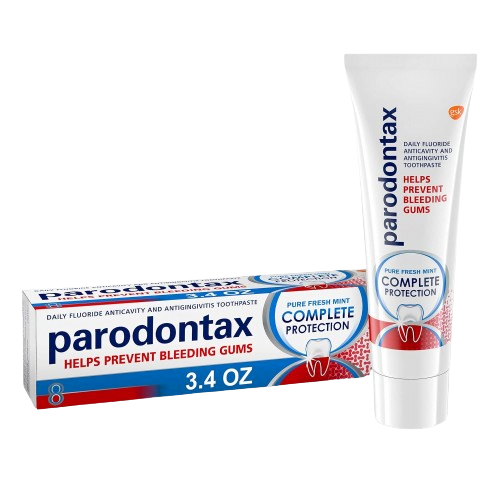
Gum Health
Signs of Gum Disease
Gum disease symptoms include red, swollen, or bleeding gums, persistent bad breath, and loose teeth. Early detection is crucial for effective treatment.
Tips for Healthy Smile & Gums
Brush and floss daily, use an antibacterial mouthwash, and visit your dentist regularly to keep your gums healthy.
Treating Gum Issues
If you notice signs of gum disease, consult your dentist. Treatments may include deep cleaning, medications, or more advanced procedures if necessary.
Avoiding Tobacco Products
Impact of Tobacco on Oral Health
Tobacco use can cause oral cancer, gum disease, and tooth discoloration. It also slows healing after dental procedures.
Benefits of Quitting
Quitting tobacco improves your overall health and significantly reduces the risk of oral health issues.
Resources for Quitting
There are numerous resources available to help you quit tobacco, including counseling, medications, and support groups.
Special Care for Children’s Teeth
Importance of Early Dental Care
Good dental care should start early. Taking your child to the dentist by their first birthday helps set the stage for a lifetime of healthy teeth.
Tips for Brushing Children’s Teeth
Use a small, soft-bristled toothbrush and a pea-sized amount of fluoride toothpaste. Make brushing fun and part of the daily routine.
Encouraging Good Habits in Kids
Teach your children to brush and floss properly and encourage them to eat a balanced diet to promote healthy teeth and gums.
Dealing with Dental Emergencies
Common Dental Emergencies
Common dental emergencies include knocked-out teeth, severe toothache, and broken teeth. Knowing how to handle these situations can save your smile.
Immediate Steps to Take
If you have a dental emergency, stay calm and contact your dentist immediately. For a knocked-out tooth, try to place it back in the socket or keep it in milk until you can see a dentist.
When to Seek Professional Help
Seek professional help immediately for any dental emergency to prevent further damage and ensure the best possible outcome.
Conclusion For Healthy Smile
Maintaining a healthy smile between dental visits is all about consistency and good habits. By following these tips, you can keep your teeth and gums in excellent condition. Remember, regular visits to your dentist, like those at Diamond Dental Care in Diamond Bar, California, are crucial for maintaining optimal oral health.
FAQs For Healthy Smile
How often should I brush my teeth?
You should brush your teeth at least twice a day, ideally in the morning and before bed.
Is flossing really necessary?
Yes, flossing is essential for removing plaque and food particles between your teeth that brushing alone can’t reach.
What should I do if I have a toothache?
If you have a toothache, rinse your mouth with warm water, floss to remove any trapped food, and contact your dentist as soon as possible.
Can diet affect my oral health?
Yes, your diet plays a significant role in your oral health. Eating a balanced diet and avoiding sugary and acidic foods can help keep your teeth and gums healthy.
How can I find a good dentist?
Look for a dentist with positive reviews, a convenient location, and one who offers the services you need. Personal recommendations and online research can also help.
